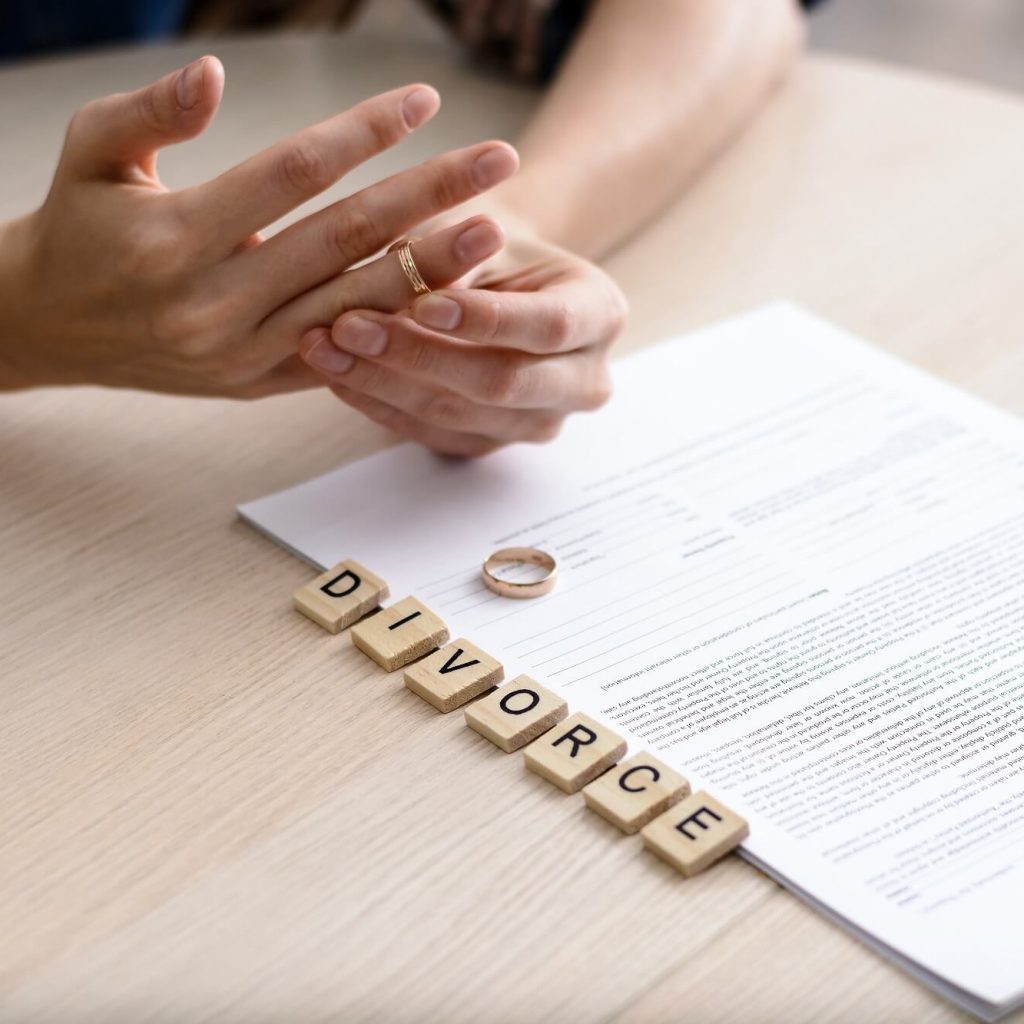Last Updated on April 2024
Legal separation in New York allows spouses to live apart without divorcing, while divorce fully terminates the marriage. The key difference is that separation maintains the legal union without permitting remarriage, while divorce dissolves the marriage completely to allow remarrying.
What is a Legal Separation?
Legal separation in New York means that spouses live separately based on the Separation Agreement but are still formally married and can use the benefits of the marriage, such as health insurance coverage or pension benefits.
According to the law, there are no specific grounds for legal separation in New York if spouses are in agreement. They can initiate the process based on their desire or difficulties faced in a marriage. For example, they may want to try living apart to see if the marriage is worth maintaining or if they cannot divorce due to religious views, but living together is unbearable.
Nevertheless, living apart without drafting, notarizing, and filing a Separation Agreement with the court is not a legal separation. Without this document, your rights cannot be protected by law if the other party violates the agreements reached.
Legal separation requires spouses, on their own or with the help of an attorney, to conclude an agreement that includes their decisions on the place of living, spousal support, time spent with children, division of property, child support, and so on. Then, both partners must voluntarily sign this agreement in front of a notary. After notarization, the document becomes legally binding. After that, spouses can file it with the court, which is not always mandatory, though, according to the Civil Branch of the Supreme Court.
It is also worth mentioning that you must be a resident of the state to go through this procedure in New York.
What is a Divorce?
Divorce is a formal court process that terminates a marriage. If you consider getting a divorce in New York, you must meet the residency requirements and have an acceptable reason for initiating the process. This can be one of the following:
- Irretrievable breakdown in relationship for at least 6 months
- Abandonment
- Adultery
- Cruel and inhuman treatment
- Imprisonment
- Divorce after a legal separation agreement
- Divorce after a judgment of separation.
Depending on the situation and reasons, the divorce process in New York may be no-fault or involve blaming the other party for wrongdoing that led to the breakup.

Also, the procedure can be contested when spouses do not agree on the marriage termination terms, or uncontested, when parties can settle such issues as division of property, child and spousal support, family debts, etc., on their own without the need to involve the court.
For the court to review your case and end your marriage officially, you need to complete the following steps:
- Fill out and file the necessary forms with the County Clerk’s Office, paying the mandatory court fees.
- Serve the second party with the paperwork and receive a response from them.
- Put the case on the court calendar and attend the hearing, if necessary in your case.
- Obtain a signed Judgment of Divorce, serve your spouse with it, and file it with the clerk’s office. After that, you are officially divorced.
What Makes a Separation Different from a Divorce?
There are several major differences between the two legal concepts:
- the main difference between divorced and separated spouses is that in the first case, they can enter into a new marriage, while in the second one, the parties are still formally married without the possibility of legalizing a new relationship.
- you can’t use your spouse’s insurance benefits if you are divorced, while in separation, it is possible. Also, dissolving a marriage will affect your eligibility for pension benefits. In New York, pension accounts opened during a marriage can be considered marital property that should be divided in a divorce. When doing so, the court will take into account the duration of the marriage. Leaving in separation counts as years in a marriage, so if spouses decide to divorce in the future, one of them can be eligible to get part of the pension of the other spouse based on the sufficient marriage duration.
- the legal separation gives you the right to reunite with your spouse without the need to remarry, which is not possible if you are divorced.
- speaking about how much a legal separation is in New York, it is usually cheaper than divorce. If parties decide to involve a lawyer in drafting the Separation Agreement, the price will depend on the time the legal representative spends on the case. Spouses may expect to pay from $250 to $500 for an hour of lawyer’s work and add to it the cost of the notary services and court filing fees of $210.
The divorce is more expensive since parties should cover the cost of an attorney if they hire one, service fees, filing fees, and any additional expenses. In some cases, the spending on divorce can reach tens of thousands of dollars, so the price benefits of legal separation in New York can be quite weighty. Still, you also need to take into consideration its potential drawbacks.
Why Is Divorce a Better Option Than Legal Separation?
When comparing separation and divorce, it is worth noting that for some people, there are many disadvantages of legal separation due to which they choose to divorce.
One of the main drawbacks is that spouses are still in official marriage, which means they cannot remarry. Even dating another person can have negative consequences for you. For example, the other party may later file for divorce, accusing you of adultery, which may affect the judge’s decisions about child custody or distribution of assets.

Also, if spouses cannot cooperate, or the location of one of them is unknown, a couple may not be able to work on a Separation Agreement, making the divorce the only way to end a relationship.
Some cases when divorce is a more reasonable option than legal separation are when spouses:
- have come to the conclusion that they will never re-establish a relationship;
- don’t want to be connected in any way;
- want to marry someone else;
- suffer from inappropriate treatment in the relationship;
- have disagreements because of which they cannot sign a Separation Agreement.
At the same time, legal separation can be your option if you:
- hope to repair the relationship;
- do not want to lose the benefits that will end with the divorce;
- don’t yet have enough financial resources to begin the divorce process;
- don’t favor divorce on religious grounds, etc.
How to Legally Separate From Spouse
In case you want to live separately but still have some official regulations on different family matters such as child custody, visitation, child support, payment of debts, etc., you may be interested in how to file for a legal separation in New York state and where to get the necessary legal separation forms. There are no specific forms as for divorce, and even if you contact the County Clerk’s Office, they may not be able to provide you with some sample.
The point is that you have to draw up a Separation Agreement on your own or with the help of an attorney. It must be correctly composed to be legally enforceable and include all the necessary points, such as:
- general information about you and your spouse;
- where and with whom the children will live;
- how bills will be divided;
- child and spousal support terms;
- visitation schedule;
- the distribution of joint property, etc.
After the document has been completed, each partner must voluntarily sign it in the presence of a notary. For their convenience, spouses may not sign the document at the same time; each can visit the notary separately.
The next step is filing for legal separation in New York. You should file the signed agreement with the County Clerk’s Office, paying a $210 filing fee.
If you decide to divorce after a year of legal separation, you will be able to use living apart based on the Separation Agreement as a legal ground for marriage dissolution. Also, if you file divorce forms with the same court in the future, the filing fees will be reduced by the $210 you paid earlier.

Rafael Hebert is an experienced writer specializing in such topics as infidelity in marriage and divorce. His works can be seen on popular blogs like Marriage.com and Divorce Magazine. Having background in relationship counseling, Rafael is dedicated to helping individuals with emotional issues surrounding infidelity and educating them on their divorce options. In his free time, Rafael enjoys watching documentaries and visiting film festivals in different states.








